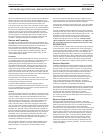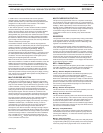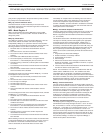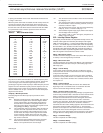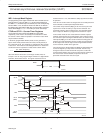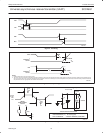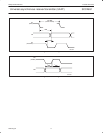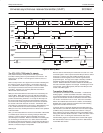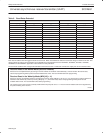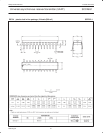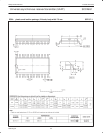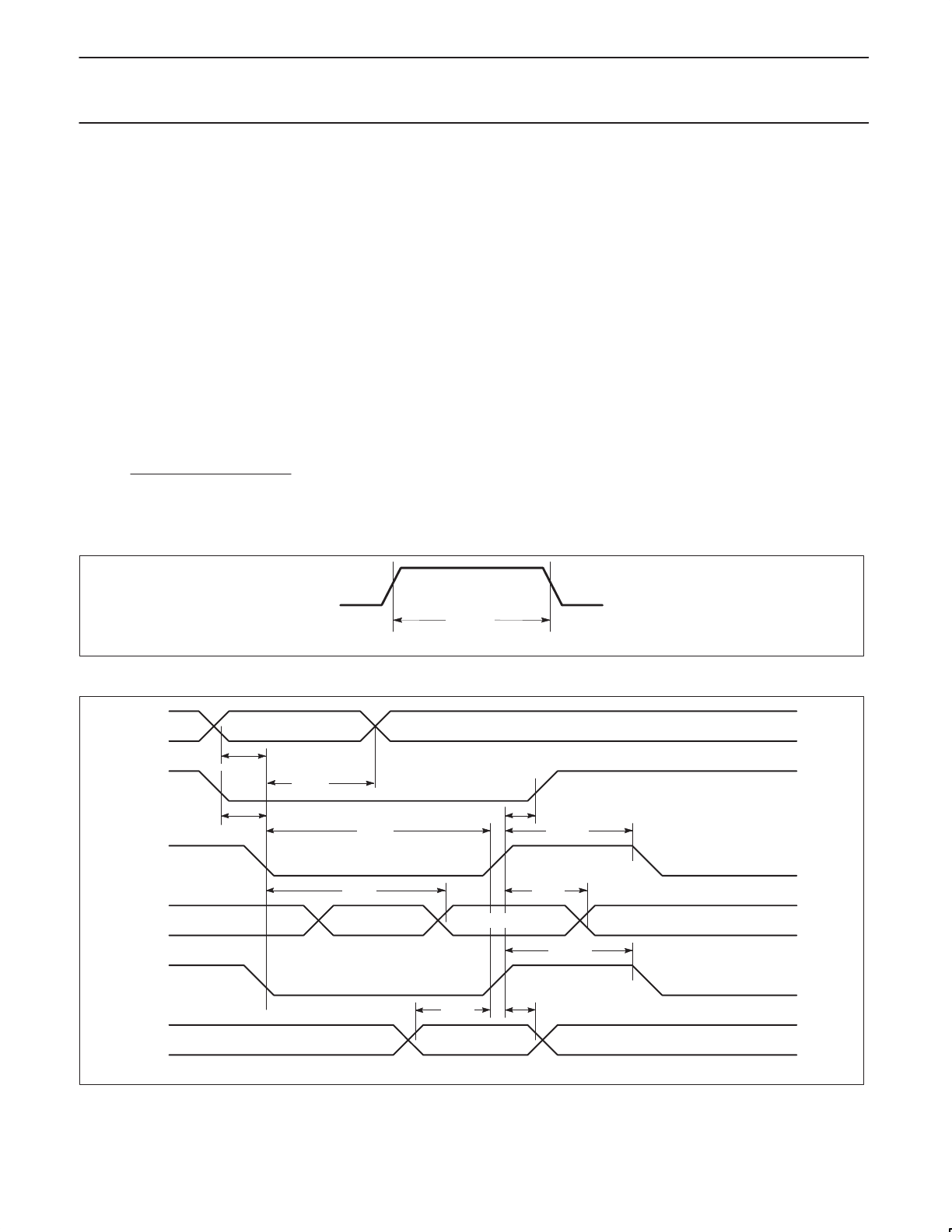
Philips Semiconductors Product data sheet
SCC2691Universal asynchronous receiver/transmitter (UART)
2006 Aug 04
15
IMR – Interrupt Mask Register
The programming of this register selects which bits in the ISR cause an
interrupt output. If a bit in the ISR is a ‘1’ and the corresponding bit in
the IMR is a ‘1’, the INTRN output is asserted (low). If the corresponding
bit in the IMR is a zero, the state of the bit in the ISR has no effect on
the INTRN output. Note that the IMR does not mask reading of the ISR.
NOTE: When IMR[6] is a 1, a 1 on the MPI pin causes and interrupt.
CTUR and CTLR – Counter/Timer Registers
The CTUR and CTLR hold the eight MSBs and eight LSBs,
respectively, of the value to be used by the counter/timer in either
the counter or timer modes of operation. The minimum value which
may be loaded is H‘0002’.
In the timer (programmable divider) mode, the C/T generates a
square wave whose period is twice the value (in clock periods) of
the CTUR and CTLR. The waveform so generated is often used for
a data clock. The formula for calculating the divisor n to load to the
CTUR and CTLR for a particular 1X data clock is shown below:
n +
CńT Clock Frequency
2 x 16 x Baud rate desired
Often this division will result in a non-integer number; 26.3, for
example. One can only program integer numbers in a digital divider.
Therefore, 26 would be chosen. This gives a baud rate error of
0.3/26.3 which is 1.14%; well within the ability asynchronous mode
of operation.
If the value in CTUR or CTLR is changed, the current half-period will
not be affected, but subsequent half-periods will be.
The counter ready status bit (ISR[4]) is set once each cycle of the
square wave. The bit is reset by a stop counter command. The
command, however, does not stop the C/T. The generated square
wave is output on MPO if it is programmed to be the C/T output.
In the counter mode, the C/T counts down the number of pulses
loaded in CTUR and CTLR. Counting begins upon receipt of a start
C/T command. Upon reaching the terminal count, the counter ready
interrupt bit (ISR[4]) is set. the counter continues counting past the
terminal count until stopped by the CPU. If MPO is programmed to
be the output of the C/T, the output remains high until the terminal
count is reached, at which time it goes low.
The output returns to the high state and ISR[4] is cleared when the
counter is stopped by a stop counter command. The CPU may
change the values of CTUR and CTLR at any time, but the new
count becomes effective only on the next start counter command. If
new values have not been loaded, the previous values are
preserved and used for the next count cycle.
SD00028
RESET
t
RES
Figure 3. Reset Timing
A0–A2
CEN
RDN
D0–D7
(READ)
WRN
D0–D7
(WRITE)
t
AS
t
AH
t
CS
t
RWD
t
DD
t
DF
t
RWD
t
DH
t
DS
t
RW
t
CH
FLOAT FLOATNOT VALID VALID
VALID
SD00124
Figure 4. Bus Timing




